On Friday, July 10, our first day back on Nantucket, I worked on my internship gathering information for the Higginbotham House in the morning. In the evening, we attended a lecture by Bonnie Burnham, president of the World Monuments Fund, at the Coffin School. Burnham, a graduate of the University of Florida, spoke about the uphill battle in preserving cultural heritage sites.
One of the new things Preservation Institute: Nantucket is trying to do is put an emphasis on world heritage, not just U.S. heritage. There’s a movement spurred by PI:N to have Nantucket nominated for the World Heritage List. It’s never going to happen (100 percent of property owners on the island would have to agree) and the powers that be recognize the odds are slim. But the proponents are pushing it anyway because it’s going to force the island to put together more comprehensive plans for preserving what makes Nantucket so special (though some old-timers will probably say those aspects went out the window decades ago).
On Monday, Norma Barbacci, World Monuments Fund program director for Latin America, Spain, and Portugal, gave us a presentation on preservation efforts in South America. If I think preservation faces tough odds in the U.S., it’s especially challenging down there.
Then we received an introduction from our guest lecturers for the remainder of the week: Glenn Boornazien, Norman Weiss, and Christy Lombardo. All three are conservators for Integrated Conservation Services (Boornazien is the president). And both Boornazien and Weiss teach at Columbia University.
Weiss brings a chemistry background to architectural conservation and is a store of knowledge. He can walk down a street with his 10X magnifier and tell you where and when a particular stone part of a building was quarried. He’s like that with paint, too. Weiss got us to think about the social histories behind the materials that were chosen for structures and tombstones. For example, the sand we found in the mortar matches Nantucket beach sand and shows the resourcefulness of islanders.
Our two projects of the week were paint samples at the Maria Mitchell House, which we’re partially documenting this summer, and mortar analysis at Greater Light. Lombardo primarily led us through the laboratory work, and our finds were interesting. For example, I mounted a paint chip that didn’t look like much but contained (at least) seven layers of paint.

Here’s me taking a sample from a plaster wall. It’s not easy to get a good one.
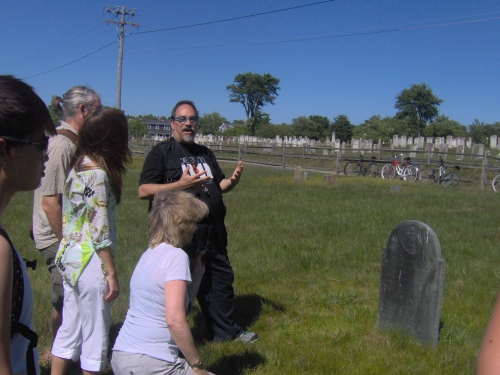
Weiss teaching about stone in the Old North Cemetery.
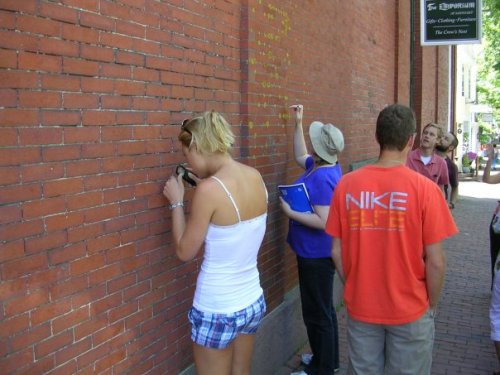
Checking the biological growth.
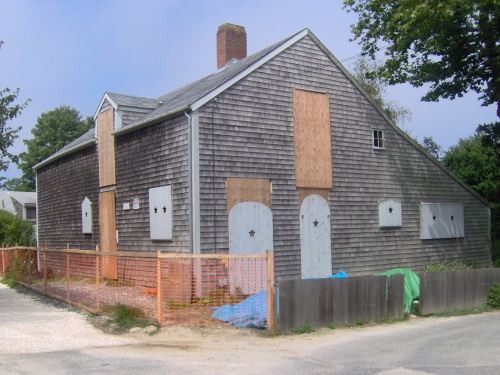
This is Greater Light, where we took our mortar samples. As you can tell, it’s undergoing restoration.

It was a barn built in the 1790 that two bohemian sisters bought in 1929 and converted into a summer house back when Nantucket had a thriving arts community. Now it’s owned by the Nantucket Historical Association.
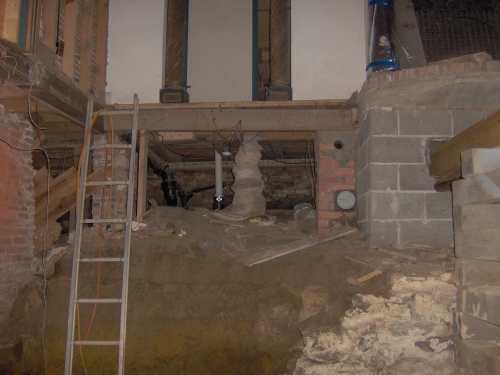
I wonder how much weight that makeshift fieldstone pier has to hold.

It’s nice to see a non-whaling or Colonial era of Nantucket represented.
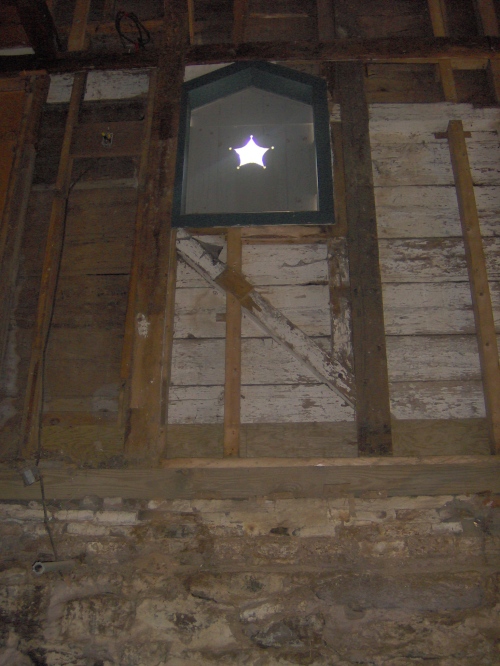
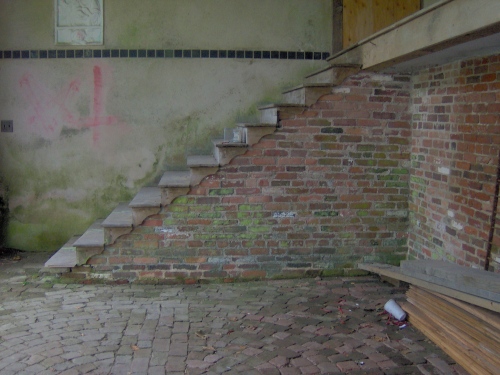
The former pig pen area where we took mortar samples for lab analysis.
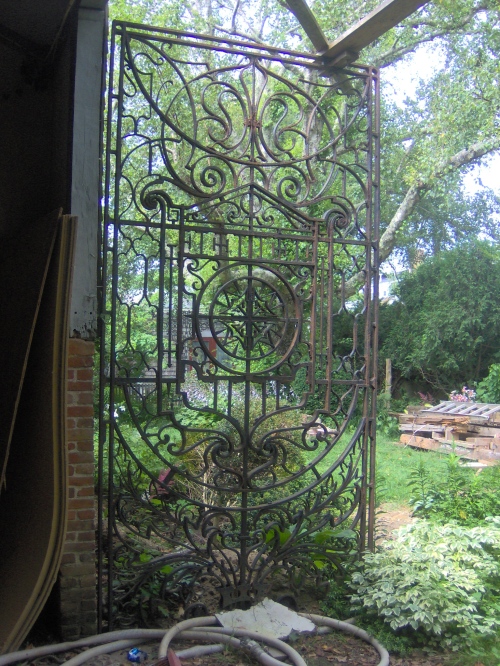
On Thursday, I attended the Nantucket Preservation Trust’s Fifth Annual Summer Kitchens Tour for free (we had to do a write up about one of the houses on the tour in exchange for tickets). Understandably, the homeowners didn’t want pictures in their house, but all looked like they were staged for a Nantucket Living photo shoot.
I was disappointed modern convenience took so much precedence over interior preservation; of the 10 houses I visited, two had their historic interiors intact. I’m not saying people should have to cook their dinner in a pot hanging over a fire, but why be part of a preservation nonprofit’s kitchen tour if there’s nothing historic remaining?
One house recently had a kitchen addition constructed at the back, complete with a SubZero fridge covered in reclaimed lumber. So much for authenticity.
